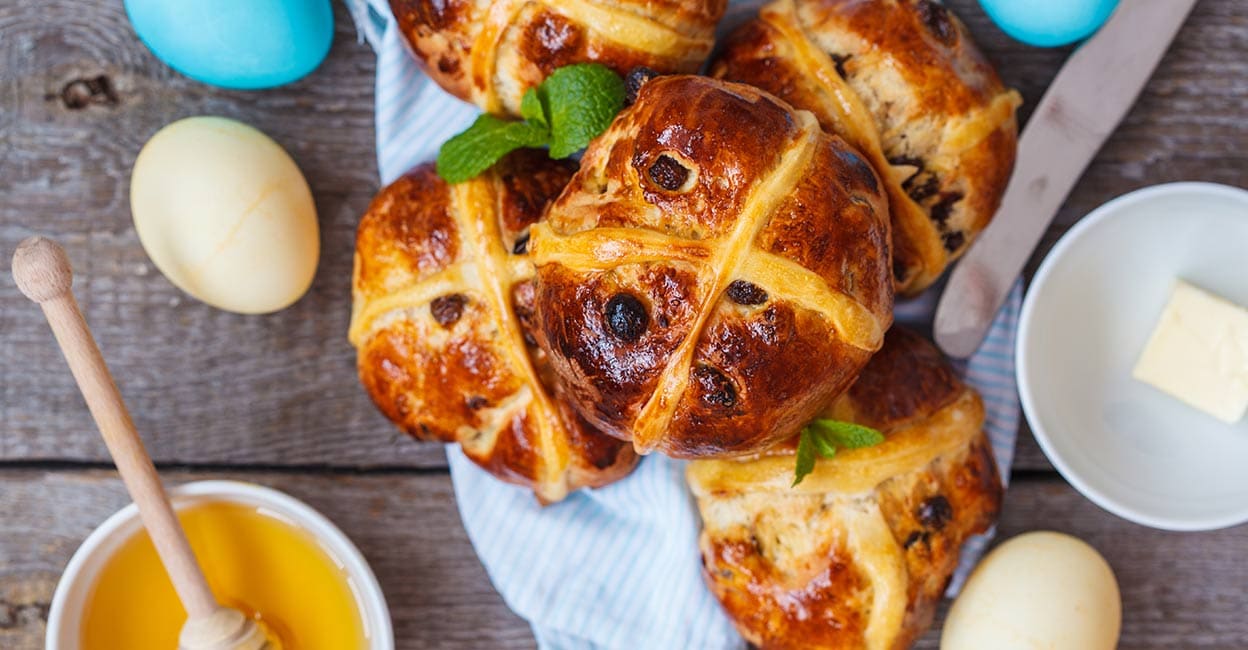From nursery rhyme to Easter staple: The intriguing story of hot cross buns

Mail This Article
Hot cross buns!
Hot cross buns!
One a penny, two a penny,
Hot cross buns!
Most of us are super-familiar with this catchy nursery rhyme. Which in turn, introduced us to the delicious hot cross buns, a UK favourite. But did you know the history and cultural significance of this simple snack?
Hot cross buns are a type of sweet, spiced bun marked with a cross on top, symbolizing the crucifixion of Jesus. They are traditionally consumed on Good Friday but are also commonly enjoyed during the Holy Week, including on Maundy Thursday, in the United Kingdom and other English-speaking countries.
Hot cross buns have roots that trace back centuries. They are believed to have originated in England, with the earliest references dating back to the 18th century. However, some sources suggest that similar spiced buns with markings were enjoyed even earlier.
The cross on top of the bun symbolizes the crucifixion of Jesus Christ, making them particularly associated with Good Friday, the day that commemorates his crucifixion. The spices inside the bun are said to represent the spices used to embalm Jesus's body.

Hot cross buns have strong ties to Christianity, particularly within Anglican and Catholic traditions. They are traditionally eaten on Good Friday to mark the end of Lent and the beginning of the Easter weekend. Some people also eat them throughout the Holy Week leading up to Easter Sunday.
There are various superstitions and beliefs associated with hot cross buns. For example, it was believed that hot cross buns baked on Good Friday would not spoil and could be used for medicinal purposes. Additionally, sharing a hot cross bun with a friend was thought to ensure a strong friendship in the coming year.
How to make them
Hot cross buns are typically made from a spiced dough containing ingredients such as currants or raisins, cinnamon, nutmeg, and allspice. The dough is shaped into rounds, allowed to rise, and then baked. After baking, a paste made from flour and water is piped onto the buns in the shape of a cross. Some modern variations include additional ingredients such as orange zest or chocolate chips.

While hot cross buns were traditionally associated with Good Friday and Easter, they are now commonly available in bakeries and supermarkets for several weeks leading up to Easter. They have become a popular seasonal treat enjoyed by people of many cultures and backgrounds.
Overall, hot cross buns are more than just a tasty snack; they are steeped in religious significance and cultural tradition, serving as a reminder of the Christian faith's central events and teachings.

